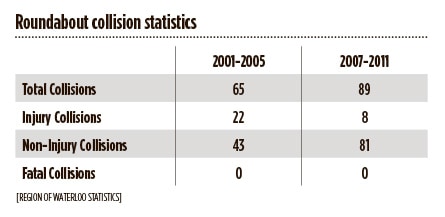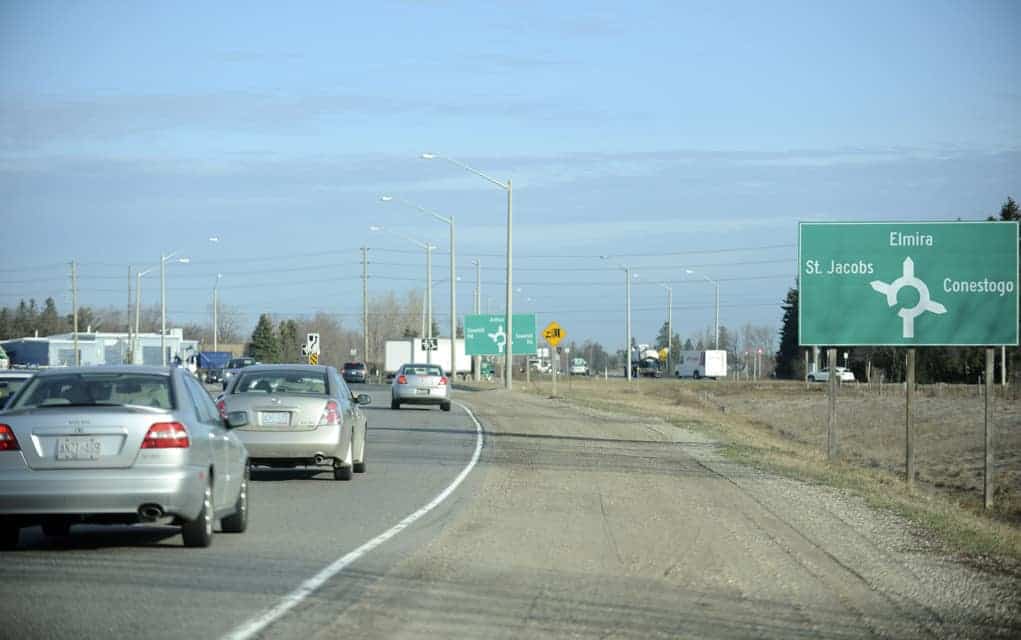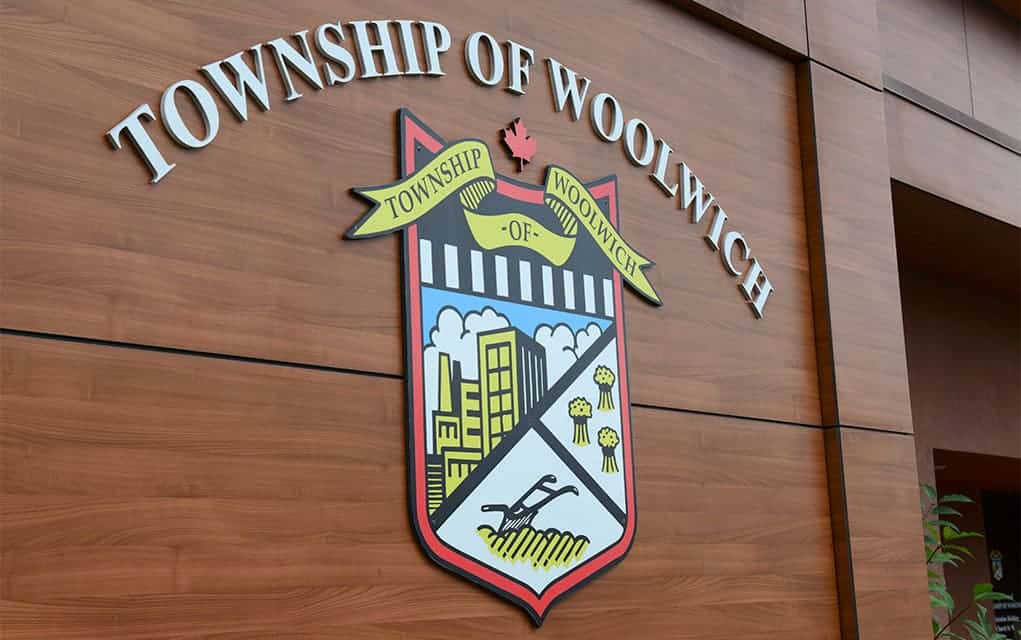Ten years ago, the region was ramping up spring construction on the Arthur Street roundabout, the second disruption along that stretch of the road from Elmira to Waterloo after the replacement of the bridge. Perhaps not surprisingly, the region considers the roundabout project a success, even without remedying some of the traffic concerns with a four-lane route.
Bob Henderson, the manager of transportation engineering at the Region of Waterloo, says the construction of the roundabout, from a four-way stop with traffic lights, has solved the problems the region was out to fix with the $1.5 million project that opened in the summer of 2006.
“Fewer people are getting injured. I can tell you that the number of collisions has remained about the same as it was before when it was a signal there, but injuries on average have gone down,” he said, adding that the setup also increases the flow of traffic. “It was also to address some congestion issues at the intersection, especially on market days. It was significant. It used to back up quite a bit. It still backs up now, but it flows through more quickly. The general level of congestion is certainly a factor. We feel that the traffic flows through that location much better than it would if it were a traffic signal. And, it also helps us to not have to expand the number of lanes at the intersection.”
The data on the collisions at the intersection is collected in five-year averages, and doesn’t account for the increase in traffic numbers. However, the numbers show the project did what it was supposed to do.
Between 2001 and 2005, there were 65 total collisions, with 22 of those causing injuries. Between 2007 and 2011, there were 89 collisions in the intersection, but only eight caused injuries.
“In general we compare five years of data before and after for most of our collision analyses to mitigate any factors that could bias the results like changes in traffic volume and/or environmental conditions,” said Henderson. “The 2006 construction year is omitted as the intersection was under construction for a large part of that year which would influence collision numbers.”
The same, or even higher, number of cars go through that intersection as before the roundabout was put in place, but the nature of the travel through the area has changed.
“The common themes with the roundabout were shallower angles, lower speed and just less opportunity for high-speed angled collisions,” he said.
The results aren’t isolated to the Arthur Street roundabout, says Henderson. With the projects around the region put in place since the Hwy. 85 construction, the results are about the same.

“In general, our injuries have gone down, but just like traffic signals, every intersection behaves a little bit different, but overall, we have seen our injuries go down,” he said.
When the roundabout idea for Arthur Street was still in its infancy, there was some discussion surrounding whether it would be more effective to just increase the number of lanes running north and south between Elmira and Waterloo. Henderson says the decision was made to construct the roundabout due to a number of factors.
“A lot of people forget that when we are evaluating an intersection, we aren’t evaluating a signal in its current form. We normally, or usually, have to expand the number of lanes at that signal, to make it operate better in the existing and future condition,” he said, adding that this time around, this wasn’t the case. “Our evaluation looks at overall costs and the social costs of collisions and together we add those and go with the option in the lowest cost. It may be the lowest cost in terms of capital upfront costs, and future collision costs.”









